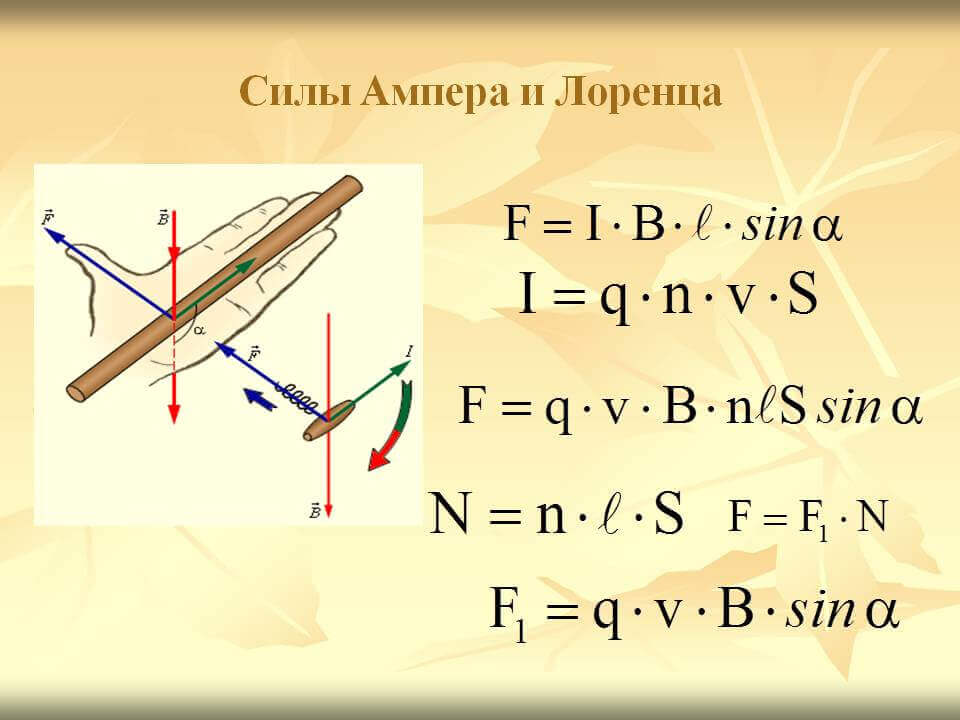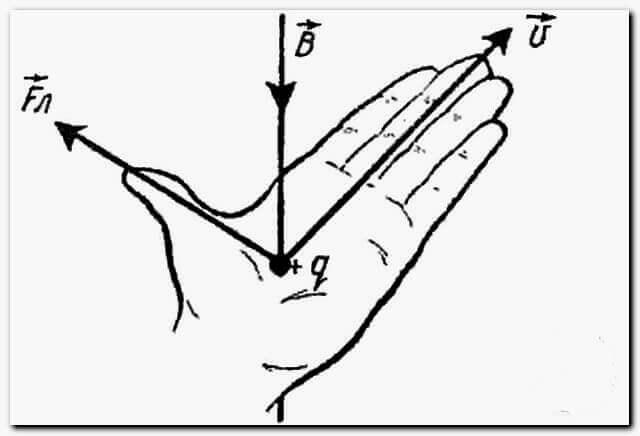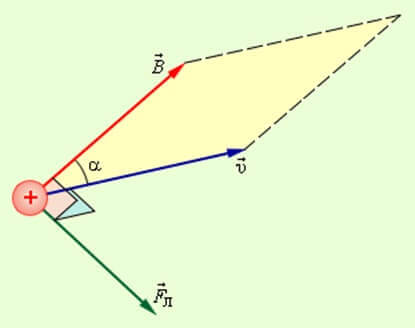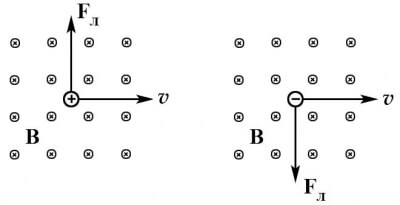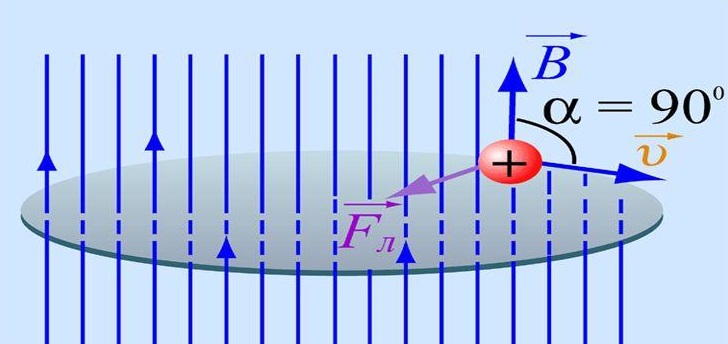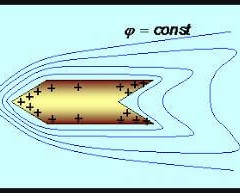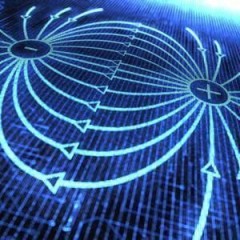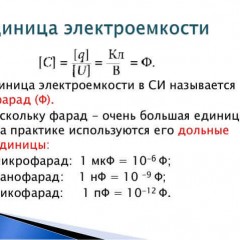What is the Lorentz force, what are the magnitude and directions of this force
Definition
When electrons move along a conductor, a magnetic field arises around it. At the same time, if you place the conductor in a transverse magnetic field and move it, EMF of electromagnetic induction will arise. If a current flows through a conductor that is in a magnetic field, an Ampere force acts on it.
Its value depends on the flowing current, the length of the conductor, the magnitude of the magnetic induction vector and the sine of the angle between the lines of the magnetic field and the conductor. It is calculated by the formula:
The force under consideration is somewhat similar to the one considered above, but does not act on the conductor, but on a moving charged particle in a magnetic field. The formula is:
Important! The Lorentz force (FL) acts on an electron moving in a magnetic field, and on the conductor - Ampere.
From the two formulas it can be seen that in the first and second cases, the closer the sine of the angle alpha to 90 degrees, the greater the effect on the conductor or charge Fa or Fl, respectively.
So, the Lorentz force is not characterized by a change in the magnitude of the velocity, but by the effect of a magnetic field on a charged electron or positive ion. When exposed to them, FL does not perform work. Accordingly, it is precisely the direction of the velocity of motion of the charged particle that changes, and not its magnitude.
As for the unit of measurement of the Lorentz force, as in the case of other forces in physics, a quantity such as Newton is used. Its components:
How the power of Lorentz is directed
To determine the direction of the Lorentz force, as with the Ampere force, the rule of the left hand works. This means that in order to understand where the Fl value is directed, one needs to open the palm of the left hand so that the lines of magnetic induction enter the hand, and the elongated four fingers indicate the direction of the velocity vector. Then the thumb, bent at a right angle to the palm, indicates the direction of the Lorentz force. In the picture below you see how to determine the direction.
Attention! The direction of the Lorentz action is perpendicular to the motion of the particle and the lines of magnetic induction.
At the same time, to be more precise, for positively and negatively charged particles, the direction of four extended fingers matters. The above-described left-hand rule is formulated for a positive particle.If it is negatively charged, then the lines of magnetic induction should not be directed to the open palm, but to its back side, and the direction of the vector Fl will be opposite.
Now we will tell in simple words what this phenomenon gives us and what real impact it has on charges. Suppose that an electron moves in a plane perpendicular to the direction of the lines of magnetic induction. We have already mentioned that Fl does not affect the speed, but only changes the direction of motion of the particles. Then the Lorentz force will have a centripetal effect. This is reflected in the figure below.
Application
Of all the areas where the Lorentz force is used, one of the largest is the movement of particles in the magnetic field of the earth. If we consider our planet as a large magnet, then the particles that are near the north magnetic poles make accelerated motion in a spiral. As a result of this, they collide with atoms from the upper layers of the atmosphere, and we see the northern lights.
However, there are other cases where this phenomenon applies. For instance:
- Cathode ray tubes. In their electromagnetic deflection systems. CRTs have been used for more than 50 years in a row in various devices, from the simplest oscilloscope to televisions of various shapes and sizes. It is curious that in matters of color rendering and graphics, some still use CRT monitors.
- Electric cars - generators and engines. Although the force of Ampere is more likely to act here. But these values can be considered as adjacent. However, these are complex devices during the operation of which the effect of many physical phenomena is observed.
- In accelerators of charged particles in order to give them orbits and directions.
Conclusion
To summarize and outline the four main points of this article in simple language:
- The Lorentz force acts on charged particles that move in a magnetic field. This follows from the basic formula.
- It is directly proportional to the speed of a charged particle and magnetic induction.
- Does not affect particle speed.
- Affects the direction of the particle.
Its role is quite large in the "electrical" areas. The specialist should not lose sight of the basic theoretical information about the fundamental physical laws. This knowledge is useful, as well as those who are engaged in scientific work, design and just for general development.
Finally, we recommend watching useful videos to consolidate the material studied:
Now you know what the Lorentz force is, what it is equal to and how it acts on charged particles. If you have questions, ask them in the comments under the article!
Related materials:

